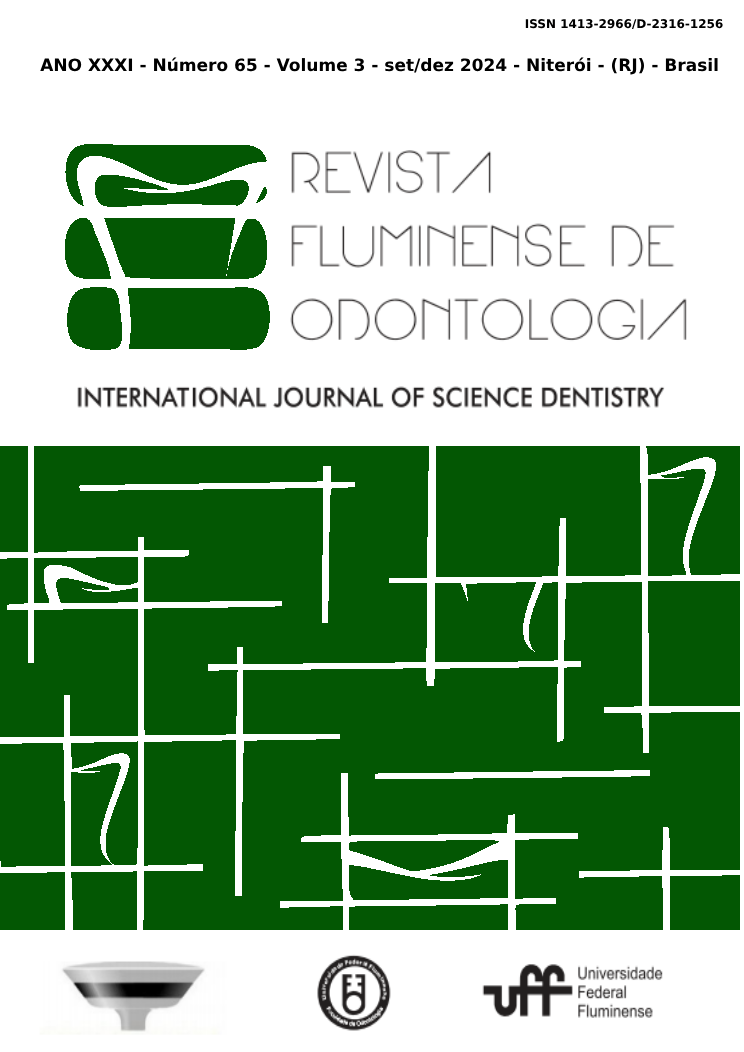Cervical dentinary hypersensitivity: clinical protocol for the application of DSP Gluhem Desensitizer™
DOI:
https://doi.org/10.22409/ijosd.v3i65.59622Abstract
The objective of the present study was to establish a clinical protocol for the application of the product GSP Desensitizer Gluhem in teeth with root exposure without loss of tooth structure, and to carry out a dissertation analysis on the main component of this product: glutaraldehyde, in the treatment of dentin hypersensitivity. For this, the patient went to the Dental Clinic of UFF| Niterói - RJ, complaining of intense sensitivity to cold in elements 13 and 34. First, information was collected during the anamnesis, and the clinical examination showed gingival recession and root exposure in these elements, but there was no loss of tooth structure. Initially, the pain level was evaluated using the Analog Pain Scale, which scores pain levels from 0 to 10, with 0 being “no pain” and 10 “worst possible pain”. After questioning, the region was dried with an air jet and the desensitizing Gluhem solution was applied throughout the entire cervical region of element 13 up to the gingival margin for 40 seconds with subsequent drying and washing with water. The gel formulation was also applied to element 34 following the same protocol. The patient did not react to pain after the protocol. It is concluded that the product DSP Gluhem, both in solution and in gel presentation, effectively acted on the painful symptomatology of HDC in the two applications performed.
Keywords: Glutaraldehyde; Detinary Hypersensitivity; Desensitizing.





